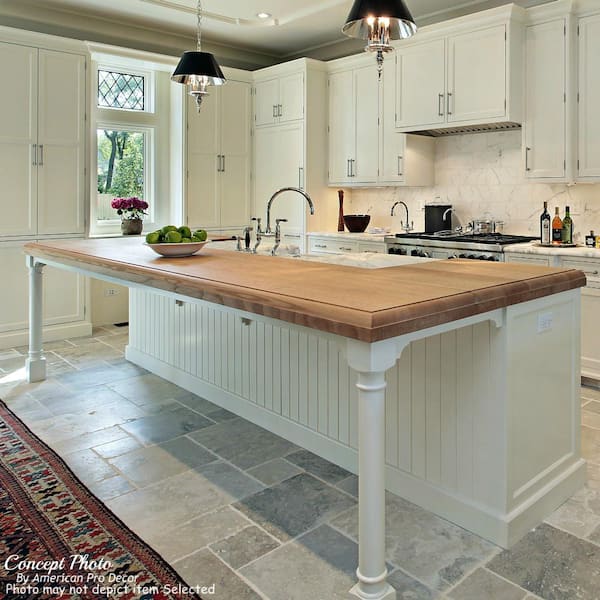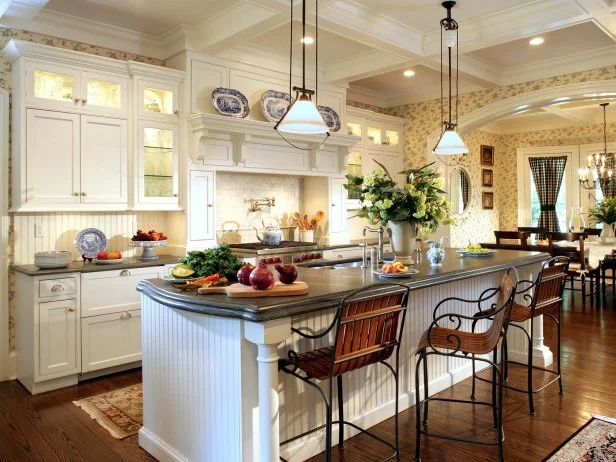High-Quality Kitchen Island Legs for a Sturdy Island Base
An Overview to Selecting the Perfect Cooking Area Island for Your Home
Choosing the ideal cooking area island is a multi-faceted choice that can considerably impact both the capability and visual appeals of your home. Recognizing your kitchen's spatial dynamics is the first action, guaranteeing that the island fits seamlessly without interfering with the flow. Past area factors to consider, determining the key objective of the island-- be it for dish prep work, dining, or extra storage space-- is critical. The selection of coatings and materials additionally plays a necessary function in integrating the island with your kitchen's general design. As we discover these elements even more, the subtleties of each choice will come to be clear.
Analyzing Your Room
Before selecting a cooking area island, it is important to extensively assess your area to make certain the addition will certainly be both useful and aesthetically pleasing. Begin by determining the offered location, including the width, length, and height of the kitchen area. Precise dimensions are crucial to avoid buying an island that bewilders the room or one that is overmuch small.
Consider the existing layout and how the island will certainly incorporate with the existing traffic flow. A well-placed island must not block pathways or hinder access to essential appliances, such as the range, sink, and refrigerator. Leave appropriate clearance area-- typically around 36 to 48 inches on all sides-- to enable comfortable activity and office effectiveness.
Next, assess the natural light and sightlines within your cooking area. An island that obstructs a home window or disrupts aesthetic cohesion can make the room really feel cramped and dark. Consider just how the island's positioning will impact lights and presence, guaranteeing it boosts instead of interferes with the kitchen's ambiance.
Identifying the Purpose
Establishing the purpose of your cooking area island is an important step in ensuring it meets your details requirements and choices. Before diving into style or dimension considerations, it is vital to clarify what primary function the island will certainly serve in your kitchen. Will it be a main center for dish preparation, a laid-back eating area, or perhaps an additional storage space service?
For those that appreciate food preparation, incorporating appliances such as a cooktop or sink may be necessary. In addition, ample counter area for chopping and blending, together with obtainable storage for kitchen area devices and ingredients, can transform the island right into an effective workstation. Alternatively, if the island is planned to assist in social communications or offer as a dining area, seating plans come to be vital. In this case, making sure adequate legroom and surface area for comfy dining experiences is vital.

Choosing the Right Size
Choosing the appropriate dimension for your cooking area island is an equilibrium of performance and area optimization. An ideal kitchen island should provide ample workspace while guaranteeing that motion around the kitchen area stays unimpeded. Begin by determining your kitchen room; a minimum clearance of 36 to 42 inches around the island is necessary to permit comfy movement and ease of access.
The dimensions see this of the island should show its desired use. As an example, if the island will certainly offer mainly as a prep location, a size of 24 to 36 inches might be enough. Nonetheless, if it is to fit seating, you need to take into consideration a bigger dimension, typically measuring at the very least 48 inches in size. Islands committed to sinks or devices might call for additional space to house these features adequately.

Last but not least, ensure that the island's size complements the overall kitchen area layout, avoiding any kind of overwhelming presence that could diminish the Get the facts kitchen's visual and utility - kitchen island legs. Careful preparation and accurate measurements will certainly help you attain a harmonious and reliable kitchen area environment
Finding Products and Finishes
After identifying the suitable size for your cooking area island, the following action entails choosing suitable materials and coatings. The choice of materials dramatically affects both the visual appeal and performance of your kitchen island. Popular products for countertops include granite, butcher, and quartz block, each offering unique advantages.
In enhancement to the countertop, think about the materials for the island base. Strong timber uses a timeless, sturdy look, while stainless steel gives a streamlined, modern-day appearance and is simple to tidy. Painted finishes can introduce a splash of shade, with alternatives ranging from muted pastels to vibrant, vivid colors.
Pay attention to the sturdiness of finishes, especially in high-traffic locations, to keep the island's look over time. Selecting the ideal materials and coatings will boost both the functionality and aesthetic appeal of your kitchen island.
Integrating Practical Features
Including functional features into your cooking area island can considerably boost its energy and convenience, changing it into a functional centerpiece of your kitchen area. One vital feature to think about is additional storage. Incorporating closets, cabinets, and open shelving can offer much-needed room for pots and pans, utensils, and little home appliances, helping to keep a clutter-free atmosphere.
An additional valuable enhancement is a built-in sink or cooktop, which can simplify dish preparation and clean-up procedures. A sink can promote jobs such as washing vegetables and cleaning recipes, while a cooktop can enable cooking directly on the island, fostering a much more interactive and social food preparation experience.
Take into consideration incorporating seating choices, particularly link if your cooking area functions as an informal dining location. Bar stools or integrated benches can transform the island into a multifunctional space for meals, homework, or laid-back celebrations.
Last but not least, incorporating electrical outlets into your kitchen island can improve its functionality. Electrical outlets give convenient access for small kitchen appliances, charging stations for electronic devices, and additional illumination alternatives.
Verdict

Prior to selecting a cooking area island, it is important to completely examine your space to make certain the enhancement will be both functional and cosmetically pleasing.Picking the appropriate dimension for your cooking area island is an equilibrium of capability and room optimization. kitchen island legs. A perfect kitchen area island ought to supply ample workspace while making sure that movement around the kitchen area stays unblocked.Incorporating practical functions right into your kitchen island can substantially boost its energy and convenience, changing it right into a functional centerpiece of your kitchen area.In final thought, choosing the optimal kitchen area island requires a detailed analysis of the offered area, quality concerning its primary feature, and cautious consideration of the ideal dimension and materials